The Best Earplugs For Musicians - Singers, Drummers, Guitarists & More
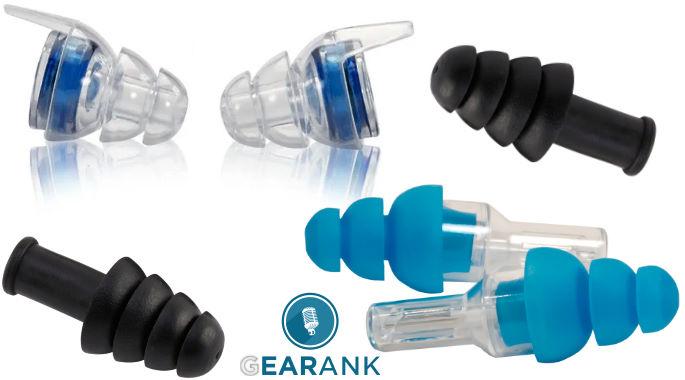
Author & Contributors
Raphael Pulgar
I've been an audio engineer for 20 years specializing in rock and metal recordings. I also play guitar and produce original music for my band and other content creators.
Fender Musician Series Black Ear Plugs
Cons
- Slightly uneven sound blocking loses some detail when compared to other musician's ear plugs
Pros
- Very high level of noise reduction
- Quite affordable for musician-grade ear plugs
- Simple, utilitarian design that does the trick
- Included accessories such as carrying case and neck cord despite its competitive pricing
From the legendary guitar makers Fender comes an affordable way to protect your hearing during concerts and long rehearsals.
Design of these earplugs are a bit of a practical and standard matter lacking any fancy filtering or chambered parts that allow useful sound to come through in innovative ways. The result is a bit of frequency degradation when compared to other ear plugs that do feature some sort of acoustic wizardry.
Still, having 4 flanges is much appreciated and this should fit most ears and go as deep as they need to to fulfill their purpose - protecting and prolonging your hearing. Also, clarity and performance is still good enough to deserve the word "Musician" in the title.
They come with a carrying case and neck cord. While nothing to write home about in terms of build quality, they are useful accessories to have.
If you're just starting out being responsible for your hearing and don't want to break the bank on something pricier, the Fender Musician Series Black Ear Plugs are a smart starting point with a simplistically spartan ethos while sporting the respected and trusted brand Fender. But if you're looking for something with a bit more bells and whistles (for a higher price), I suggest the Vic Firth High Fidelity Ear Plugs below.
However if you need the extra protection at times, then these are a good option for that with their 27db NRR attenuation.
Specifications
- Noise Attenuation: 35db (27db NRR)
- Fitting type: Universal quadruple flange
- Replaceable Eartips: No but washable and reusable
- Accessories: Carrying pouch and neck cord
| Website | Source | *Rating Value |
| Louder | Chris Barnes | 80/100 |
Vic Firth High Fidelity Ear Plugs
Cons
- Have to be replaced every few months for hygienic reasons
Pros
- Great attenuation with little compromise
- Retains bass perception
- Includes carrying pouch
- Affordable
I've always used earplugs during loud concerts. The foam ones you get at the hardware store do an adequate job protecting my ears but with one caveat: They muffled everything. I could hear and feel the rumble of the bass, but the foam earplugs just cut out everything from 200hz above. This made the concert and live performance experience very unsatisfying for me for the longest time.
I actually discovered high fidelity earplugs by doing product research for this guide and saw that the highly rated Vic Firth High Fidelity earplugs were available at my local shop. I went ahead and bought them to road test them during a show.

Visible here is the "resonance chamber" of the ear plugs. These are tuned to resonate with the vibrations in the air and let some of the sound into your ears in a controlled manner; not just volume-wise, but frequency-wise as well.
Unlike generic foam earplugs, High Fidelity ear plugs usually don't completely block out sound. They are specially tuned to let through sound as flat as possible to give the sensation of just having lowered the overall volume of the environment going into your ears.
The Vic Firth High Fidelity Ear Plugs were developed by Etymotic based on their ETY-Plugs design except tweaked to let more bass frequencies in; something that is especially beneficial on stage. I also own the Etymotic ETY-Plugs and I prefer the way the Vic Firth plugs sound especially on stage. I need to be able to hear the bass guitar and the kick drum to keep track of my tempo. The ETY-Plugs roll off a bit too much of the low end to my ears and it feels less exciting to perform with them.
I also noticed that cymbals retain their high frequency sizzle and quite a bit of detail compared to standard foam earplugs. This is great if the beat is maintained by keeping track of the cymbals, especially during quieter passages where generic foam earplugs just tune everything above 400hz out.
Even if you're not a drummer, The Vic Firth High Fidelity Ear Plugs were tuned with performers in mind. It's a great choice to keep the stage volume going into your ears low while retaining some bass perception, making it easier for singers and instrumentalists to hear vital parts of the live mix.
Specifications
- Noise Attenuation: 20db (12db NRR)
- Fitting type: Universal triple flange
- Replaceable Eartips: No
- Accessories: Carrying pouch and neck cord
| Website | Source | *Rating Value |
| Gearank | Raphael Pulgar | 93/100 |
| YouTube | Michael Mingoia Music | 95/100 |
Eargasm High Fidelity Earplugs
Cons
- Hard to take out when snuggly placed
- No included string makes them easier to lose
Pros
- Made with silky smooth medical grade, hypoallergenic silicone - feels almost like soft skin
- Effective sound protection while retaining detail
- Triple Flange design increases attenuation the deeper you insert it
- Practical aluminum carry case and 2 sizes of shell included
The Eargasm High Fidelity Earplugs are a popular set marketed mainly towards festival and concert-goers. They make great musician earplugs because of their "filtering" out of dangerous frequencies instead of just blocking it all leaving you free to experience and create music albeit at a lower volume.
Having a moderately high noise attenuation, a waterproof aluminum carrying case, and 2 sets of eartip sizes, makes them ideal for loud rock concerts. The removable filters are preinstalled in the standard sized shells but can be moved to the smaller shells without much fuss.
These earplugs sound great for live sound mixing too as they don’t filter out too many high frequencies, unlike regular foam earplugs.
Cleaning them is a straightforward affair needing only a bit of soap, water and cloth (remove the filters before cleaning!). Hygiene is not to be overlooked with earplugs as dirty ones can cause some nasty ear infections… ouch!
Some negatives I've found with these plugs are that they can be a bit hard to take out when inserted deeply with only a smallish pull out tab to help. This gets slippery after some normal, sweaty use but with a bit of effort it shouldn't take too long.
Also, I would like to have seen them include some sort of string connecting between the two plugs. This makes them harder to lose in case one falls off and you can hang them around your neck ready for insertion the moment you need them. This is more of a deliberate design choice to make them less attention-grabbing (they're not exactly invisible) but based on past experiences, I see myself losing these often.
These are a great set of earplugs with the music in mind. It strives to be quite unobtrusive and is a massive step up from your run-of-the-mill hardware store foam plugs. If you need earplugs that feel great, come with 2 sizes and still allow you to converse, interact and generally do your job, these are a highly-rated set of earplugs that you should definitely look into.
Specifications
- Noise Attenuation: 21db (16db NRR)
- Fitting type: Standard and small eartips included
- Replaceable Eartips: Yes
- Accessories: Waterproof aluminum carrying case
| Website | Source | *Rating Value |
| Legit Reviews | Nathan Kirsch | 88/100 |
| Lifewire | Jason Schneider | 92/100 |
Things to Consider When Buying Musician Earplugs
Buying your first pair of earplugs may be confusing especially when you can’t try them before you buy them. Below are some things you might want to keep in mind when selecting a pair.
-
There is a multitude of options on the market when it comes to earplugs in general. When selecting a pair to buy, make sure they are specific to your needs. Different types have different frequency and volume attenuation. Using musician’s earplugs for construction purposes might not give you enough protection. On the other hand, using industrial-grade earplugs commonly found in hardware stores affects the quality and clarity of the music you hear. For hearing protection during live performances or listening, high fidelity musician earplugs balance attenuation and clarity. Good earplugs make it seem like your surroundings just got turned down a couple of decibels like lowering the volume knob on speakers.
-
Fit determines how effective the earplugs seal out noise as well as how secure and comfortable they are when worn. Many manufacturers offer a “universal fit” for their earplugs. These usually cover 75% of the population. Ear canals vary but for those on extreme ends of the spectrum with unusually large or small ear canals, you may want to consider special sizing. Too small and they might not seal properly and fall off, too large and they may put too much pressure on your ear canals leading to soreness and inflammation.
-
Attenuation measures the number of decibels that are reduced when wearing earplugs. Each item has two numbers in the attenuation category. The first number is a manufacturer specified reduction rating in decibels based on their studies while the Noise Reduction Rating is a more conservative number derived from a standard formula. Many manufacturers believe that the NRR is not an accurate representation of the actual amount of reduction offered but they are required to indicate it on their products.
A typical rock concert is around 106db to 110db. According to research done by Etymotic, you can only be exposed to those levels for no more than 5 minutes before hearing damage can occur. Typical musicians' earplugs attenuate 12db to 25db which brings the levels low enough for safe prolonged exposure. Having a good sound engineer that knows how to apply Noise Gates and Audio Ducking also helps.
-
High fidelity earplugs are generally reusable. However, materials like the silicone used for eartips degrade over time. Manufacturers usually indicate their product's usage life in the manual. This information seldom appears on product pages so to be safe, assume that a pair of earplugs have a usage life of 3 to 6 months before the eartip material starts to degrade. When the eartips start to show signs of wear like microtears, discoloration, or a change in pliability or texture, the product may need new eartips or be replaced entirely.
-
Along with usage life, another thing to consider is whether the contact points of the earplugs are replaceable. Some manufacturers design their products to have replaceable eartips and filters. Other manufacturers intend the entire earplug to be disposable once the eartips show wear. The ones with replaceable parts tend to be more expensive and the availability of the parts is usually exclusively distributed by the manufacturer. Make sure to check the availability of replacement parts before purchasing a model that has them.
-
When it comes to safeguarding your hearing, you shouldn’t ignore the importance of continual protection. When there is a need to use in-ear monitor systems (IEMs) in your set, this is the time the earplugs need to come out. Replacing them with the best IEMs not only enhances the overall audio experience during performances, but also provides you with continued sound control and ear protection. The iem enables you to maintain pitch accuracy and rhythm, however the best fitting ones also do a great job of controlling the volume to your ears. By prioritizing both earplugs and in-ear monitors, musicians can create a harmonious balance between hearing protection and audio excellence.
Type
Sizing and Fit
Attenuation & Noise Reduction Rating (NRR)
Usage Life
Reusability
Ear Protection Using In-Ear Monitor Systems
Best Musician's Earplug Selection Methodology
The first edition was first published in 2019.
We began by creating a short-list of 13 sets of earplugs that have been designed or reported as working well for the needs of musicians and which are available from major American retailers that sell music gear - you can see them in our Music Gear Database.
We then collected and analyzed the data from over 34,200 reviews, ratings and comments (a 9.2% increased over the previous edition) and put these into the Gearank Algorithm to produce the rating scores out of 100 that you see above that indicate market sentiment about each one. From there, we selected the highest rated options to recommend. For more information about our methods see How Gearank Works.
About the Author and Contributors
Here are the key people and sources involved in this guide's production - click on linked names for information about their music industry backgrounds.
Lead Author & Researcher
Raphael Pulgar
I've been an audio engineer for 20 years specializing in rock and metal recordings. I also play guitar and produce original music for my band and other content creators.
I was born with tinnitus which causes me to hear a high pitched ringing sound at around 10khz all the time. It gets perceptively louder when I am in silence hence, me listening to music all the time was my daily workaround. Ear plugs make it possible for me to work as an Audio Engineer in circumstances where I wouldn't be able to otherwise.
Contributors
Alden Acosta: Additional product research.
Jason Horton: Editing and Illustrating.
Media
Main/Top Image: Created by Gearank.com using photographs of the Eargasm High Fidelity, Vic Firth High Fidelity and Fender Musician Series Black.
The individual product images were sourced from their respective manufacturers' websites, promotional materials or supporting documentation except for the Vic Firth Chamber photo which was taken by the Author.



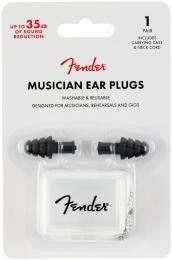
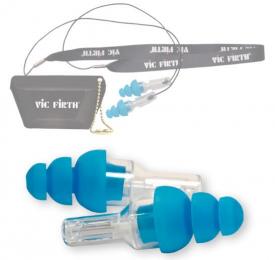
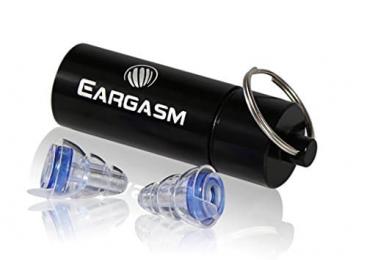
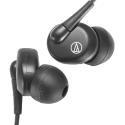
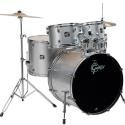
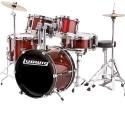
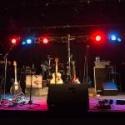
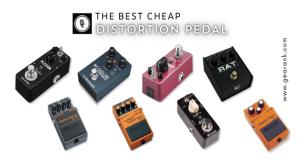

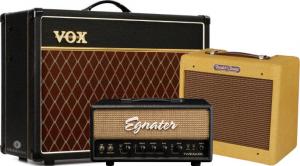
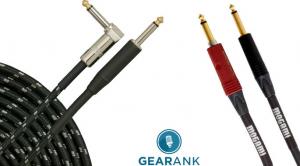
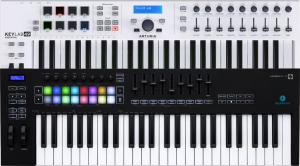
Comments
The following ear plugs came
Submitted by Jason Horton on
The following ear plugs came off the recommended list above, due to being out-ranked or discontinued, when we published our August 2022 Edition:
Publication of our August
Submitted by Jason Horton on
Publication of our August 2021 Edition resulted in the following earplugs coming off the recommended list above: Earasers Musicians Ear Plugs.
As a result of our September
Submitted by Jason Horton on
As a result of our September 2020 update the following earplugs have come off the recommended list above, but you can still read our analysis of them: